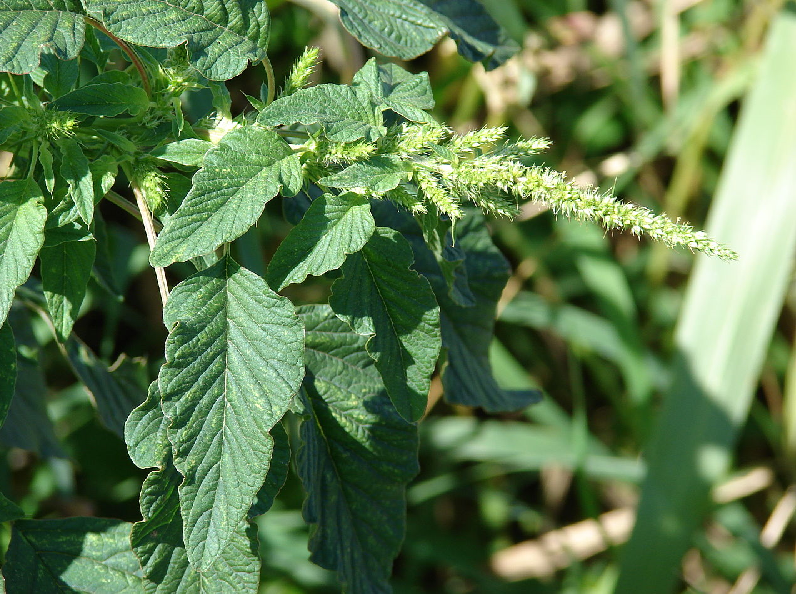To this day, amaranth is very familiar to us and is known as a common dish in Vietnamese family meals. However, few people know the effect of amaranth in the treatment of diseases, especially hemorrhoids.
Characteristics of amaranth
Amaranth’ s scientific name is Amaranthus spinosus L., belongs to amaranth family Amaranthaceae. Amaranth is an annual herb, 0.30-0.70 m tall, much branched, hairless. Leaves grow alternatively, oblong, long petioles with wings, 2 spines 3-15 mm longat the base, the upper surface of the leaf blade is pale green. Flowers grow in cymes and closely arranged in the leaf axils into long flowers, bracts 7-8 mm spines. The fruit is an ovoid sac with one endpointed. Iridescent black seeds.

Amaranth (Amaranthus spinosus L.)
Chemical composition
Amaranth root contains spinasterol.
The whole plant contains sterols (β - sitosterol, stigmasterol, campesterol, cholesterol, n - alkan, fat acids (acidstearic, acidoleic, acidlinoleic).
The aboveground part contains 1.9%rutin.
Leaves have 1.9%rutin, acidhydrocyanic,kali 4.5%.
Amaranth also has 3-methyl-1-butanol, 3-hexen-1-ol, 3-methylbutanal, 2-heptanone.
Amaranth contains a high percentage of Kali nitrat, especially in the roots.
Effects of amaranth:
Amaranth has a sweet taste, cooling properties, has the effect of clearing heat, diuretic, rheumatism, stopping cholera.
Young leaves and tops are boiled and eaten like amaranth. They are often used to treat oedema, kidney disease, gonorrhea, bacterial dysentery and as a menstrual medicine.
The part of the plant on the ground is used as soothing medicine, to treat burns, to treatacne and boils. The leaves have expectorant properties and are used to treat coughs and respiratory diseases. Seeds can be used as seeds of the cockscombto cover the fracture. People also use seeds and roots to treat heart disease.
Amaranth has phagocytosis-stimulating activity, and aqueous extract is effective against the fungus cercospora cruenta.
New breakthrough from amaranth and purslane for hemorrhoids
Dr. Pharmacist Nguyen Thi Ngoc Tram and her colleagues extracted amaranth fraction and tested pharmacological effects on vascular smooth muscle, intestinal tone and motility, coagulation - hemostasis, blood pressure, and analgesic, anti-inflammatory, antibacterialability. The results show that there are two segments with 16 points, these two segments have a good effect for the treatment of hemorrhoids.
Dr. Tram's research has discovered a new effect of amaranth and purslane to treat hemorrhoids. Because the ancient remedies as well as the work "Medical plants and herbs of Vietnam" by Prof. Dr. Do Tat Loi have not mentioned about the ability to treat hemorrhoids of amaranth. Ancient remedies ingredients to cool the body and treat constipation included only purslane.
However, patients should not arbitrarily treat hemorrhoids by decoction method, it does not effectively treat the disease. Because amaranth and purslane have many kind of plants and difficult to distinguish, patients may confuse between them when using. Besides, compounds with biological effects from purslane and amaranth were extracted by solvents other than water. Moreover, medicinal herbs collected from vegetable sources are likely to be contaminated with pesticides, due to the process of growing vegetables, farmers use pesticides to protect crops.